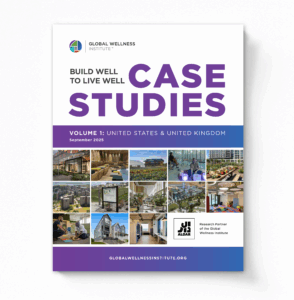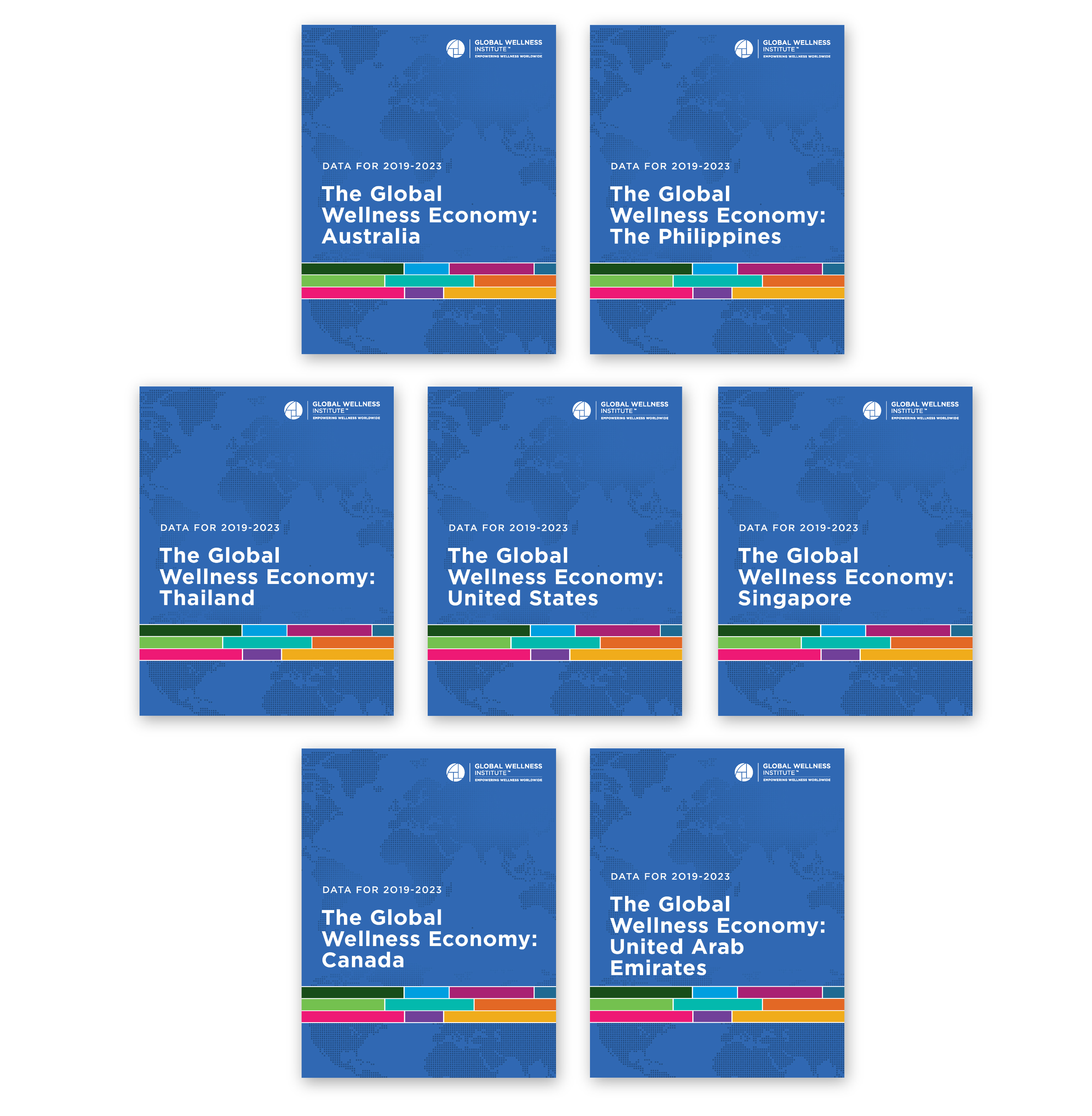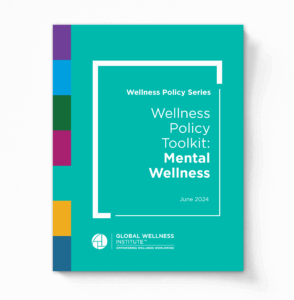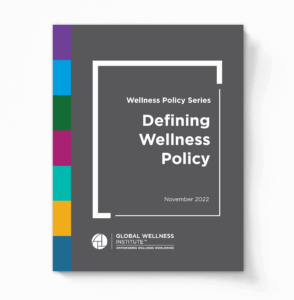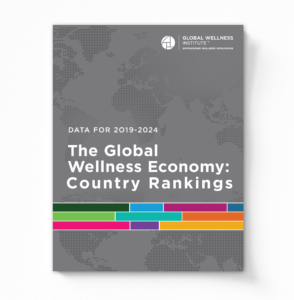LEADING WELLNESS ECONOMY RESEARCH
The Global Wellness Institute initiates, analyzes, and trumpets authoritative wellness industry research. We believe that accurate and in-depth research and data on the wellness economy—and its 11 sectors—are the foundation of the Institute’s goal to empower wellness worldwide.
Explore All Wellness Economy Reports
REPORTS BY TOPIC / SECTOR REPORTS BY DATE REPORTS BY REGION
Featured Research Reports
2025 Global Wellness Economy Monitor
The 2025 Global Wellness Economy Monitor reveals that the wellness economy has reached a new peak of $6.8 trillion in 2024. This report is packed with data capturing the growth and trends in the global wellness economy and its 11 sectors from 2019-2024.
2025 Build Well to Live Well: Case Studies, Volume 1
As a companion to GWI’s 2025 report Build Well to Live Well: The Future, this volume showcases thirteen properties across the United States and the United Kingdom, to illustrate how – with intention and thoughtful planning – wellness can be embedded in projects of any size, at any price point, and for any type of occupants.
2025 Build Well to Live Well: The Future
This report is an in-depth exploration of the wellness real estate market and a valuable reference guide for the real estate and building industry. It aims to support the industry and its stakeholders to prepare for a future where wellness real estate can be implemented on any scale (from a single home to an entire neighborhood), can meet the needs of diverse residents/occupants, and can be delivered at many price points. It provides a deep dive into why we need more wellness real estate, how to build it, and how to communicate its health and economic benefits. It also explores twelve important future opportunities for the market, with dozens of project examples.
Geography of Wellness: Country Reports
The Geography of Wellness is a groundbreaking initiative led by the Research Fellows at GWI focusing on providing robust wellness market data for select countries around the world. Each country’s wellness economy data is presented on a dedicated country webpage, as well as in a detailed Wellness Economy Country Report, which shows the trajectory of the wellness economy, the composition of the country’s wellness economy, and other exclusive data by sector and subsector.
2024 Wellness Policy Toolkit: Mental Wellness
The third of seven toolkits in GWI’s Wellness Policy Series, this report presents mental wellness as a coherent domain of wellness policy that is separate from, and complementary to, mental health policy. It explores key challenges to our mental wellness, explains why we need to promote mental wellness, and offers specific policy actions that stakeholders can pursue to support all populations.
2024 Wellness Policy Toolkit: Wellness In Tourism
The second of seven toolkits in GWI’s Wellness Policy Series, this report introduces a new paradigm for wellness in tourism. It identifies six key barriers that are currently preventing wellness tourism from delivering broad-based health and well-being benefits. It then presents policy ideas that help everyone – from visitors to local residents to businesses – reap more benefits from tourism.
2023 Wellness Policy Toolkit: Physical Activity
The first of seven toolkits in GWI’s Wellness Policy Series, this report explores key barriers driving physical inactivity, and it presents six areas of policy action, where new policies, government resources, and public-private partnerships can address gaps and expand physical activity participation and access.
2022 Defining Wellness Policy
The first-ever study to define wellness policy and argue for why it is needed, this report makes a compelling case for why wellness policy is essential not only for governments but also for businesses. This report is the first release in GWI’s Wellness Policy Series.
2026 Country Rankings
Report coming soon!
The Global Wellness Economy
The wellness economy is a colossal global industry, estimated by the Global Wellness Institute at $6.8 trillion in 2024. The wellness economy encompasses eleven varied and diverse sectors, which enable consumers to incorporate wellness activities and lifestyles into their daily lives.
 EXPLORE MORE WELLNESS CHARTS & GRAPHS
EXPLORE MORE WELLNESS CHARTS & GRAPHS
About the Global Wellness Institute Wellness Economy Research
The Global Wellness Institute provides comprehensive, objective, and global research on the wellness economy and its 11 sectors. We strive to be the go-to resource for those seeking to understand how wellness has become a driving force in today’s global economy, at the nexus of consumer markets, business opportunities, and government policy-making.
All of our research is available for free to the public, and therefore we rely on sponsorships to underwrite the work. Our research sponsors understand well the value of supporting research, both as a service to the public and a business decision, as sponsors receive visibility throughout the year and are forever linked to the important work of the Institute. Please click here for more information about sponsoring research.
Please note that all reports are the property of the Global Wellness Institute. Quotation of, citation from, and reference to any of the data, findings and research methodology from the reports must be credited to the Global Wellness Institute. To obtain permission for copying and reproduction, please contact the Global Wellness Institute by email at [email protected].

